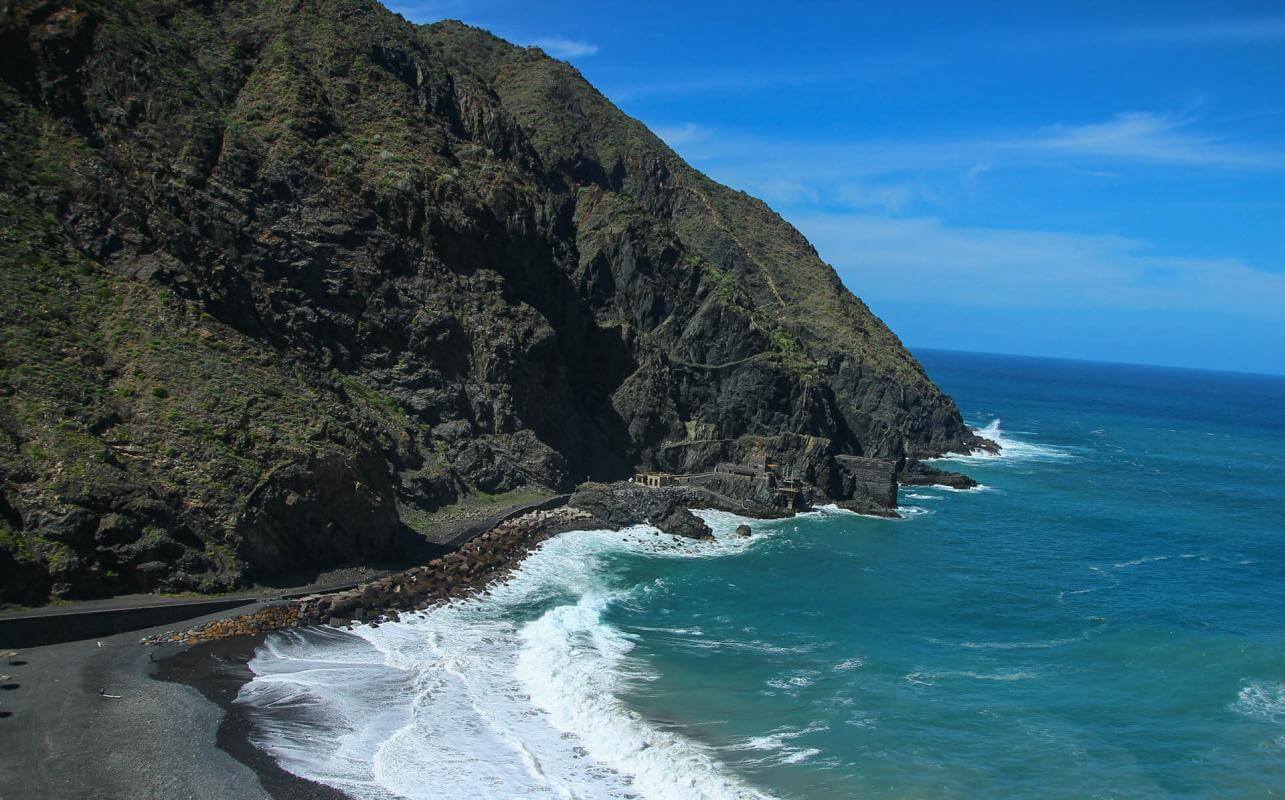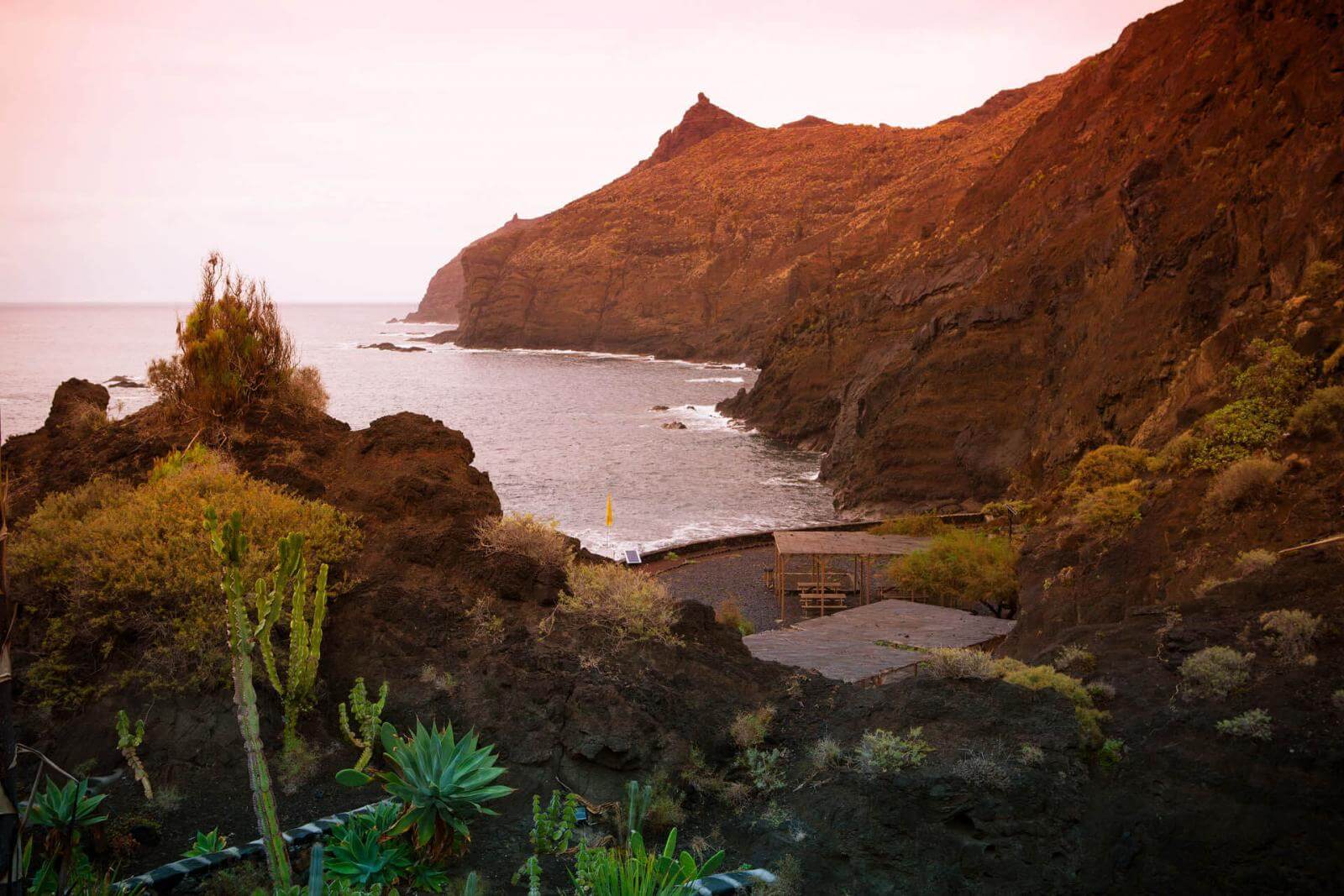La Gomera’s beaches are one of the island’s main attractions and can be enjoyed all year round. Mainly made of black volcanic sand, small coves can be found at the foot of cliffs if you want to enjoy some alone time, and the popular beaches are of course easy to access, all with crystal-clear waters. La Gomera has the perfect beach for everyone.
Heavenly beaches
La Gomera is, without a doubt, the island in the archipelago with the most virgin beaches. Given its geographic location, many of them are located near steep cliffs, where mankind has had little effect on how they have evolved or been conserved. They are natural phenomena that time has changed and shaped into some of the most beautiful and cherished attractions on the island. Places to explore without direction, unwind under the sun, let the breeze flow through your hair and enjoy the promise of year-round good temperatures.
Around the island, beaches can be differentiated between those in the north and those in the south. The main differences are the wind and the chances to watch the sun rise in the north or the sun set in the south. The colours and lights that they create are part of the island’s wonders, from Vallehermoso to the beach in Avalos. Each of them has its own distinct charm, but they all have a way of convincing tourists that they’re the perfect place to spend a day in the sun, relaxing and forgetting about everything other than this perfect spot where sand and water become one.







A natural beach
Playa del Inglés is probably the best-known beach on the island. Along with being one of the prettiest ones, it’s close to apartments, restaurants, recreational areas and other services. It spreads over 300 metres of black sand in a somewhat isolated rustic area with views of the cliffs in La Mérica. During the 1970s, it became a hotspot for hippies. Its bohemian fame lives on today, and it is mostly nudist.
It is located in the southwest of Valle Gran Rey and, like all beaches in the south of the island, the sunset you see here is spectacular and one of the best on La Gomera. Its waters are clean and crystalline. It’s the perfect place for a dip in turquoise waters, although you may sometimes have to check the waves before swimming here.
It’s easy to get to by car, as it has its own car park, or on foot. Its history and charm, along with the flowers and cacti that surround it, make Playa del Inglés the best beach in La Gomera.
The most popular beaches
When it comes to choosing where to enjoy your holidays, you need to take several factors into account. Finding a beach in an urban area isn’t as common on La Gomera, and that’s why San Sebastián Beach is a popular choice among tourists who want the comfort of having restaurants and recreational areas close at hand. We can still find two smaller and more hidden beaches in San Sebastián however, which are beautiful alternatives: Tapahuga Beach and Chinguarime Beach.
The next stop is Avalos Beach, not too far from the capital town. Its main attraction is that it’s isolated from the rest of the world, surrounded by palm trees and cliffs. Another spot that is somewhat far from the urban area is La Caleta Beach, in Hermigua. It’s a bit difficult to get to, as you need to take back roads and then walk part of the way, but, once you reach the beach, you won’t doubt it was worth the trouble.
Other beaches worth checking out include La Calera Beach, La Puntilla, Santiago Beach and La Cueva Beach. The last two have blue flags during the summer months.
Dolphin and whale watching
La Gomera offers the chance to see cetaceans around the island practically all year round. In its waters, which are brimming with life and colour, you can see up to 21 different species of marine mammals, from dolphins to whales. The temperature of the ocean water and the crystalline waters create a perfect place to enjoy these animals in their natural habitat.
From Vueltas, the port of Valle Gran Rey, or even Santiago Beach, you can take daily excursions to see the dolphins. The marine area that surrounds La Gomera is considered a Whale Heritage Site, the only place in Europe with this acknowledgment that is shared with places like South Africa, Australia and California.






